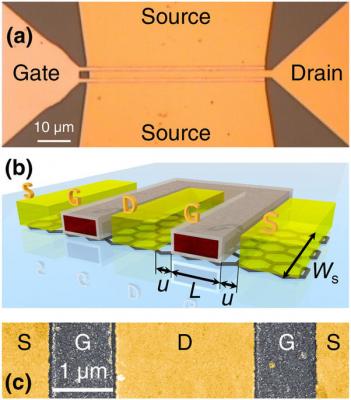An international team of scientists collaborating in the Graphene Flagship project has developed a graphene-based transistor that reportedly outperforms previous state-of-the-art ones. The team utilized a thin top gate insulator material to optimize operational properties like maximum oscillation frequency, cutoff frequency, forward transmission coefficient, and open-circuit voltage gain, realizing devices that show prospect of using graphene in a wide range of electronic applications.

Graphene lack of a bandgap hinders its use in electronics since it causes an inability to switch the transistors off, effectively rendering the 0 state in digital logic inaccessible. However, many analog applications do not require a bandgap; The team explains that the only undesired side-effect of using GFETs in analog circuits is a poor saturation of the drain current, which prevents high-gain operation. The researchers have now succeeded in improving saturation by optimizing the dielectric material (AlOx) that is used to electrically insulate the top gate of the GFET. An improved quality of gate dielectric resulted in strong control over carriers in the graphene channel, yielding overall performance benefits.
As part of the project, the researchers identified critical technological parameters that could be optimized to further improve the maximum oscillation frequency, showing that the proposed improvements are of a technological nature, rather than a fundamental obstacle. The research suggests that a further improvement of CVD graphene quality, smoother substrates, reduced contact and gate resistances should yield devices with even higher real use potential.